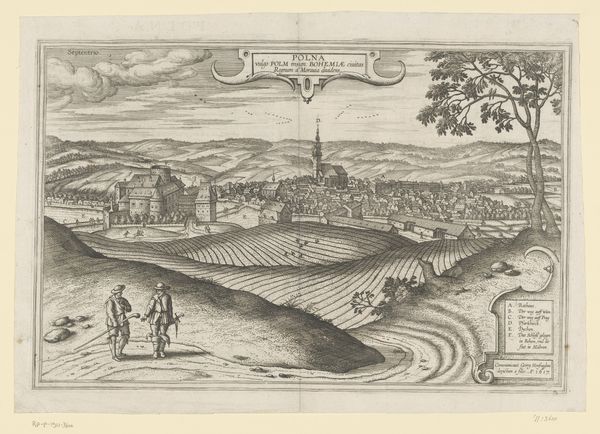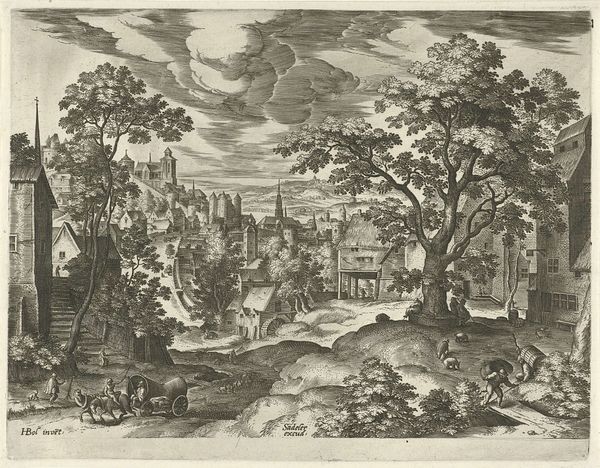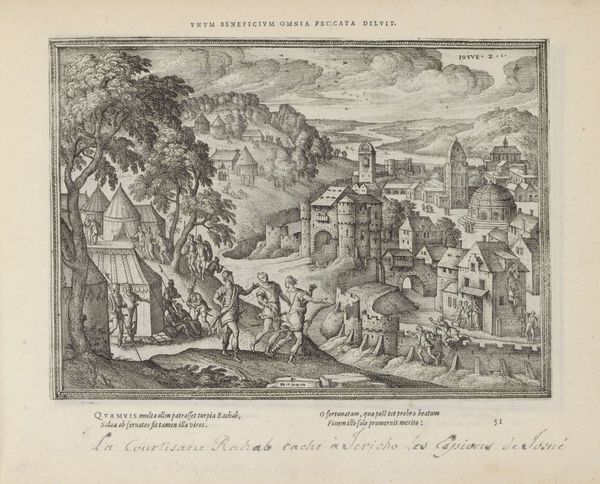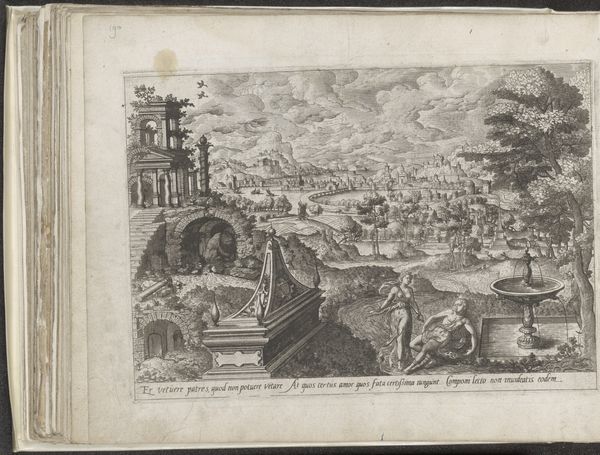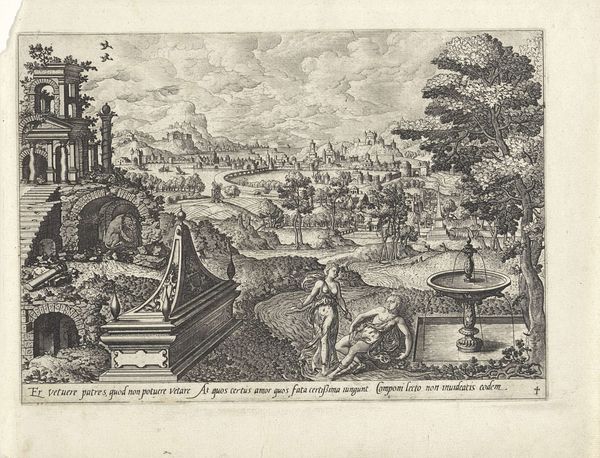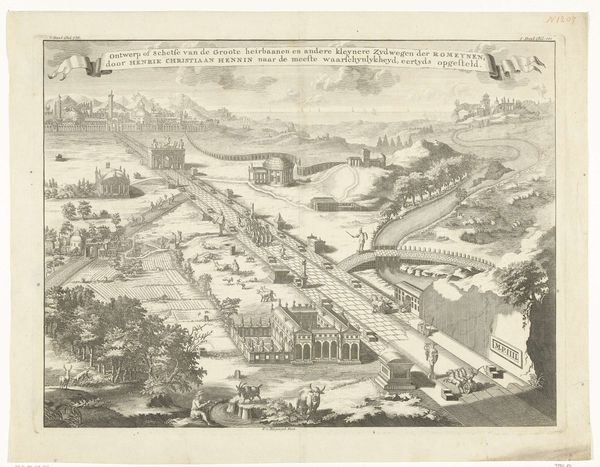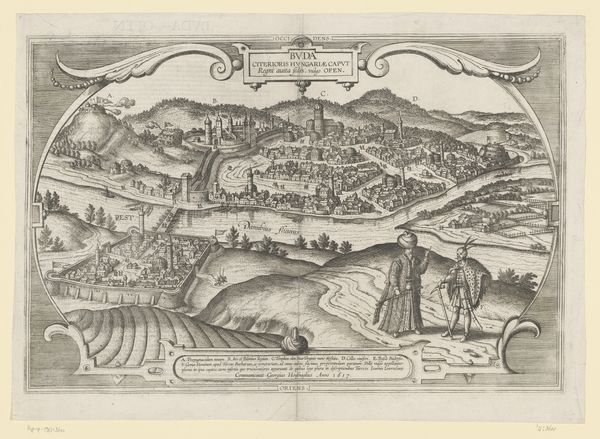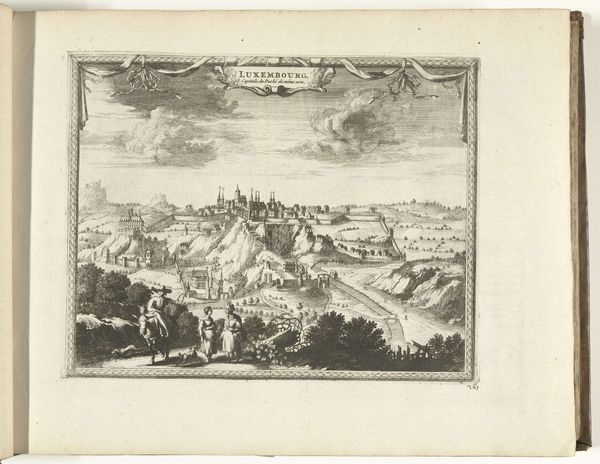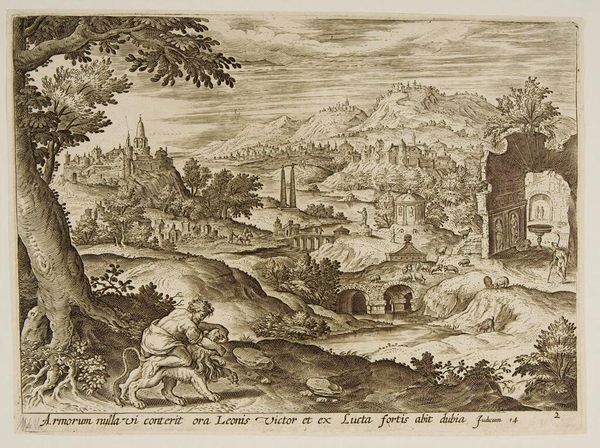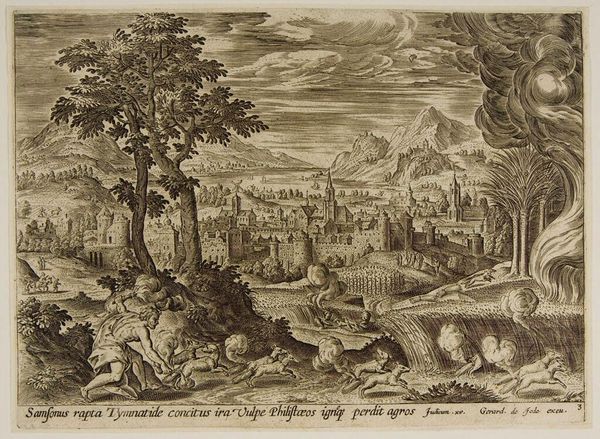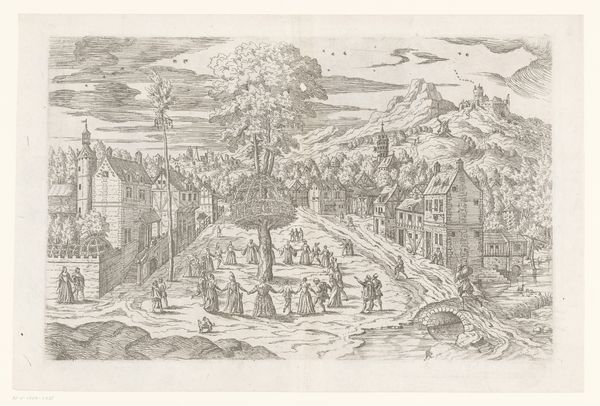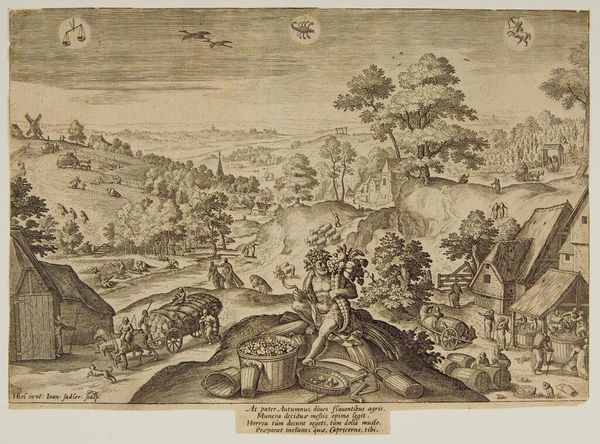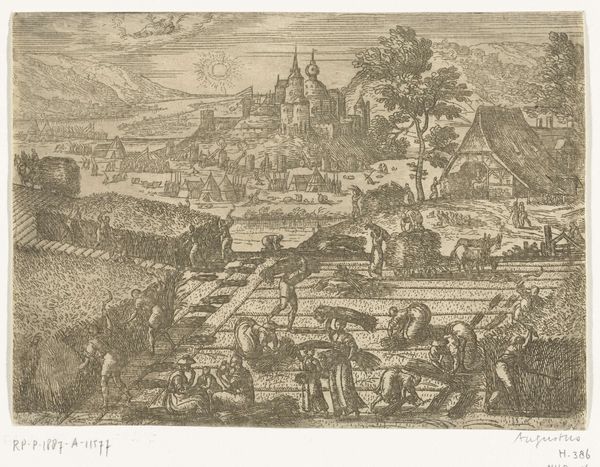
print, engraving
# print
#
pencil sketch
#
old engraving style
#
landscape
#
genre-painting
#
northern-renaissance
#
engraving
Dimensions: height 220 mm, width 293 mm
Copyright: Rijks Museum: Open Domain
Curator: This engraving, known as "Lente," was crafted around 1580 by Johann Sadeler I, and it currently resides here at the Rijksmuseum. Editor: It strikes me immediately as incredibly detailed, a whole world rendered in miniature. The contrasting textures—the rough thatch of the buildings against the smooth skin of the central figure—really catch the eye. Curator: Absolutely. Consider the meticulous process involved in creating this print. Sadeler would have relied on specific engraving tools, ink compositions, and paper quality to make such complex artwork. The engraver’s labor itself is part of this piece’s story; each line representing hours of craftwork within a printmaking industry supplying imagery to a burgeoning market. Editor: Indeed, but what’s equally compelling is the structure, the strategic deployment of space. See how the artist utilizes atmospheric perspective, subtly shifting the tonal values, creating depth that leads the eye toward that vanishing point nestled within the landscape? Curator: It’s intriguing to see the blurring of lines between high art and common craft, right? A northern Renaissance aesthetic is obvious in the imagery. We are invited to consider the materials – the tools laid at the central figure’s feet— and how those tools dictate labor involved in creating food for a nation through agriculture. Editor: That central figure, garlanded with blossoms, is cleverly positioned as the focal point; the organization and geometry around it bring balance to the otherwise busy, genre-like depiction of people at work in their daily lives. The sun signs further suggest themes. Curator: I’d argue that Sadeler uses these scenes to reflect real economic activity; we can deduce from what these farmers are producing, insights to what’s available to markets. It’s both aesthetically beautiful and informative as a material record. Editor: Well, regardless of our diverging paths, hopefully we gave a new context to understand the artwork’s place within art history. Curator: Exactly, now you might perceive its creation, themes, and purpose with much greater clarity.
Comments
No comments
Be the first to comment and join the conversation on the ultimate creative platform.
